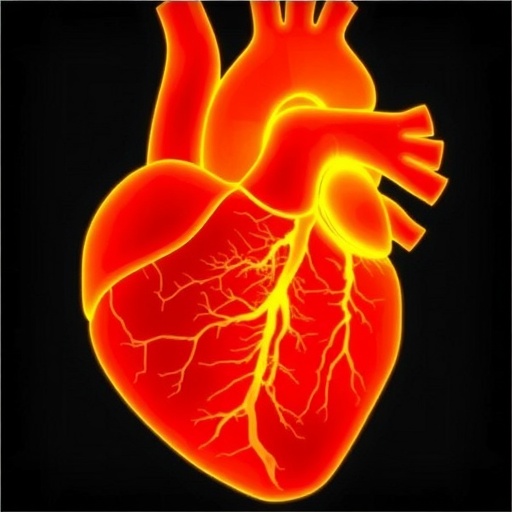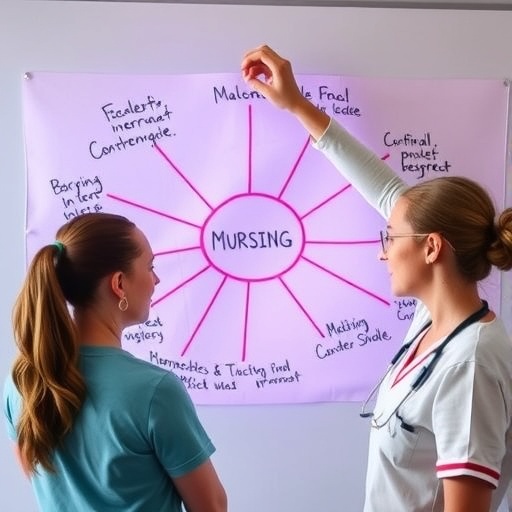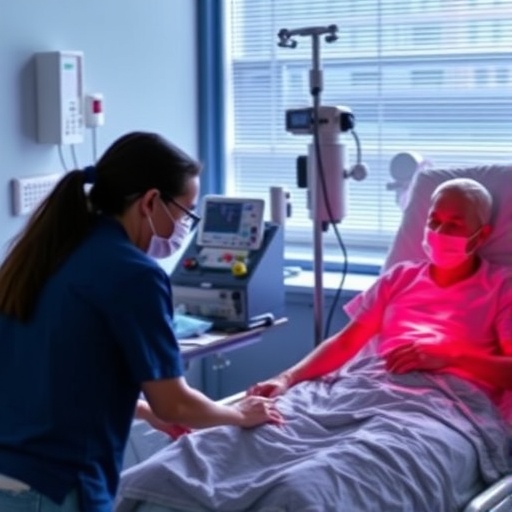In a groundbreaking study published in the Annals of Biomedical Engineering, researchers led by Shirakawa, T., Shimamura, K., and Maeda, K., delve into the critical biomechanical characteristics of human aortic valves affected by calcification due to aortic stenosis. This condition, which is characterized by the narrowing of the heart’s aortic valve, has significant implications for cardiovascular health, leading to increased morbidity and mortality among affected patients. The research highlights the urgent need for better diagnostic tools and treatment approaches that can holistically address the mechanical properties of these compromised valves.
The study’s primary objective was to quantitatively evaluate the calcification stiffness of resected human aortic valves. By leveraging state-of-the-art biomechanical testing methods, the researchers sought to establish a clearer understanding of how calcification affects valve function. Over time, calcification can impede the opening and closing mechanisms of the aortic valve, significantly altering its ability to efficiently regulate blood flow from the heart into the aorta and toward the rest of the body. This evaluation is crucial for developing future interventions aimed at mitigating the adverse effects of this condition on patient health.
Ex vivo quantification of calcification stiffness employs intricate techniques designed to assess the mechanical properties of tissues outside of the living organism. This innovative approach allows researchers to measure the stiffness of the calcified tissue with precise accuracy. By understanding the mechanical behavior of these valves under stress conditions, clinicians can better appreciate the functional limitations imposed by calcification. Additionally, the study explores the differences in stiffness between normal and calcified aortic valves, shedding light on the complex interactions between heart physiology and pathological changes.
The researchers employed an advanced testing protocol that involved meticulous sample preparation. Human aortic valve specimens were retrieved and subjected to a series of biomechanical assessments, enabling the team to measure parameters such as stiffness, elasticity, and the load-bearing capacity of the calcified tissue. The results illustrated significant differences in stiffness, indicating that as valves become increasingly calcified, their ability to deform under pressure diminishes markedly. Such findings emphasize the need for targeted therapeutic strategies that could restore or enhance valve functionality in patients suffering from aortic stenosis.
Moreover, the implications of calcified stiffness extend beyond mere mechanical limitations. The study demonstrated how these changes could influence the flow dynamics within the heart and across the aortic valve. With higher stiffness levels come altered hemodynamic patterns, which can further exacerbate cardiac workload. Understanding this relationship is vital, as it opens the door to potential interventions aimed at reversing stiffness or at least mitigating its effects on heart function.
As the population ages, cases of aortic stenosis are expected to rise, making this research all the more relevant. The aging process is often associated with increased calcium deposits within the cardiovascular system, leading to heightened incidences of calcification. The findings from this study could inform future surgical or therapeutic options, such as valve repair or replacement strategies, tailored to individual patient profiles based on the specific biomechanical characteristics of their aortic valves.
The team also discusses the limitations of current comminuting processes used in valve replacements. As more surgical procedures are performed on calcified aortic valves, understanding the biomechanical properties of the resected tissue could pave the way for innovations in surgical techniques. Tailoring repairs or replacements based on preoperative biomechanical assessments may enhance the outcomes and longevity of prosthetic devices.
In addition to the findings on stiffness, the researchers recognized the importance of further studies to investigate the biochemical pathways leading to calcification. Understanding these underlying mechanisms could facilitate the development of novel pharmacological therapies aimed at preventing or reversing valve calcification. This line of inquiry could ultimately contribute to more effective management strategies for patients at risk of aortic stenosis.
Another notable aspect of this research is its potential to inspire future interdisciplinary collaborations among cardiologists, bioengineers, and material scientists. By combining expertise from diverse fields, the development of more sophisticated diagnostic and therapeutic tools could transform the landscape of cardiovascular medicine. Innovations stemming from this collaborative spirit may lead to the creation of specialized implants or biological agents that target calcification at the molecular level.
As the research progresses, it will be essential to ensure that findings are translated into patient care effectively. Integrating biomechanical assessments into routine diagnostic protocols for patients with suspected aortic stenosis could lead to earlier interventions and better outcomes. Personalizing treatment based on the individual biomechanical profile of a patient’s aortic valve represents a significant step forward in cardiovascular medicine.
The promise of such integrated care also resonates at the level of patient education and awareness. Increased understanding of the biomechanical alterations that occur in aortic stenosis may empower patients to seek timely evaluations and adhere to recommended treatment plans. Moreover, community outreach programs could help bridge the knowledge gap surrounding this condition, fostering a more informed patient population.
Through meticulous research and innovative methodologies, Shirakawa and colleagues have made a significant contribution to our understanding of the biomechanical properties of calcified aortic valves. Their work not only adds to the existing knowledge base but also serves as a catalyst for future research endeavors that seek to improve the lives of patients suffering from aortic stenosis. This research underscores the importance of a comprehensive approach to cardiovascular health, urging the medical community to explore the intersections between mechanics, biology, and patient care in the quest for better health outcomes.
In conclusion, the study on ex vivo quantification of calcification stiffness in aortic stenosis sheds light on a critical area of cardiovascular research. By elucidating the mechanical properties of calcified valves, the researchers open doors to improved diagnostic methods and therapeutic approaches. As the medical community continues to grapple with the challenges posed by aortic stenosis, this pioneering work serves as a reminder of the intricate interplay between structure and function in the human body, reinforcing the need for ongoing research in the field of biomedical engineering.
Subject of Research: The biomechanical properties of calcified aortic valves in aortic stenosis.
Article Title: Ex Vivo Quantification of Calcification Stiffness in Aortic Stenosis: Biomechanical Data from Resected Human Valves.
Article References:
Shirakawa, T., Shimamura, K., Maeda, K. et al. Ex Vivo Quantification of Calcification Stiffness in Aortic Stenosis: Biomechanical Data from Resected Human Valves.
Ann Biomed Eng (2025). https://doi.org/10.1007/s10439-025-03869-x
Image Credits: AI Generated
DOI:
Keywords: Aortic Stenosis, Calcification, Biomechanics, Heart Valves, Cardiac Health, Surgical Interventions.
Tags: advancements in biomedical engineering for heart valvesaortic stenosis valve researchbiomechanical properties of aortic valvescalcification stiffness measurementcardiovascular health implicationsdiagnostic tools for aortic stenosisex vivo assessment of valve stiffnessimplications of valve calcification on blood flowimproving patient outcomes in aortic stenosismechanical testing methods in biomedicinetreatment approaches for calcified valvesvalve function and calcification effects





